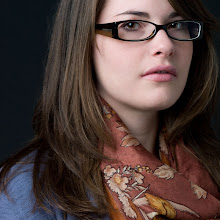
A few things I'm looking at in relation to my ballerina piece....which is turning into a video at some point.
Art 21.
Here is the link to the Art:21 on Antin. I love her comments about walking on tiny stilts (point shoes) and how grabbing a woman's crotch and lifting her up can be called art.
Antin speaks up.
I found this to be an interesting interaction between the museum archive and Antin. I also enjoy the back story to her ballerina series.
I am currently reading "Being Antinovia," Antin's journal during the three weeks in the Seventies she spent in New York, performing full time as the black ballerina Eleanora Antinovia. The memoir is funny an engaging, filled with self absorbed details from a women who thought of little else but how other's perceived her. In her writings she discusses her paranioa over people being racist or discovering she was "playing black" through her makeup. She also takes about her need to be scene, and that as a black women, she was often not served in restaurant or waited on by doormen.
although Antin plays with the idea of being a black women, the entire personae would be about race if not for the part where she was also performing as a ballerina during this time, putting on nightly shows and wandering around the city in fabulously glamorous garb. In Antin's mind, the ballerina gave her free entrance into people's hearts. Performing as a culturally treasured female icon, she hoped to receive the same attention in everyday life. The vast difference between what she expected and what she got is something that I am exploring in my work as well. For while I put on the costume of the ballerina and the princess, I know full well that I can never be the characters I assume.
But I can be a character. The key to being a princess or a ballerina is to taking their invisible, innate qualities and applying them to yourself. Then, people don't know what they're looking at, but they know they like it. By manipulating the cultural standards of femininity, and using them to your benefit you turn the tables, even if somewhat naively. This is something I am interested in exploring in my work.


























